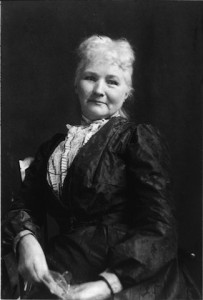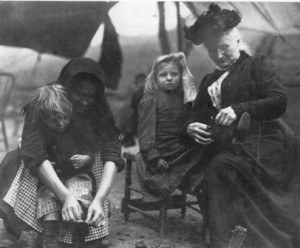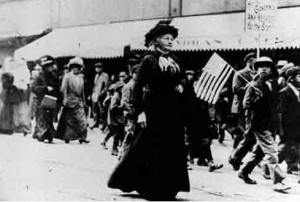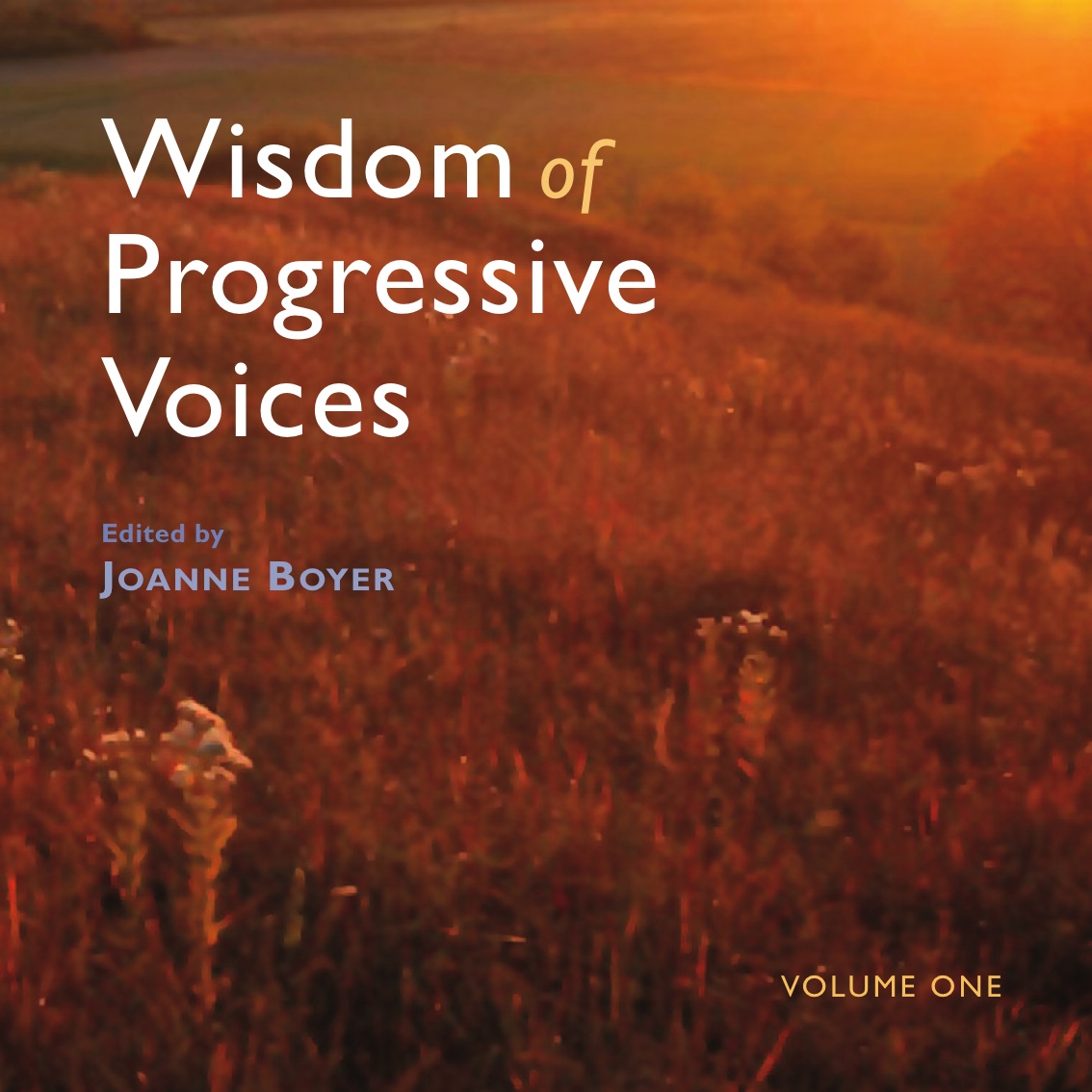Ask someone if they know the name Mother Jones. If they do, they might answer that they know the name because of the publication dedicated to investigative journalism. Some might even know that yes, Mother Jones is a labor organizer from the 19th and early 20th century. But few, we would argue, know much else about this amazing woman who could easily be called the “mother” of the American Labor Movement.

The “grand lady” of the Labor Movement, Mother Jones never gave up on her fight to make life better for American workers.
We as a country have not done a solid job of passing on the stories of those who fought and sometimes died to build an American Labor Movement. We too often take for granted the 40-hour work week, child labor laws, and a “living wage.” These didn’t “just happen.” Those in the American Labor Movement such as Mother Jones won them after hard-fought battles. Perhaps if we had done a better job telling stories and reminding others of the great fighters for workers’ rights from nearly a century ago, we might not be in quite the pickle we are today in terms of a disappearing middle class, stagnant wages and full-time jobs that leave people still living in poverty.
As we approach Labor Day 2015, we believer there is no better time to remember Mother Jones and the incredible legacy of a woman who never flinched in the struggle for justice for the working class of this country.
Mary Harris Jones — like many who toiled to organize American workers — was an immigrant. She was born in Cork County, Ireland, and immigrated to North America with her family as a child to escape the Irish famine. The exact year of her birth is uncertain, but in her autobiography she claims it to be 1830. She came to this country when James K. Polk was president and died in 1930 with Herbert Hoover occupying the White House. The amount of change that happened within the country, the labor movement, and her life is nothing short of breath taking.
She crafted her early life as a seamstress in Chicago before moving to Memphis, Tenn., where she met and married George Jones, a skilled iron molder and staunch unionist. They started married life in a divided city during the Civil War. Once the war ended, George traveled extensively throughout Tennessee and neighboring states signing up workers for the union, persuading iron molders that it was in their best interest to join a union. Mary took a keen interest in her husband’s activities and the pair may have been destined for a life together of union organizing had not catastrophe hit the family in 1867.
Yellow fever gripped Memphis that summer and in the height of the epidemic, Mary lost her husband and four children to the disease. At 37, Mary had buried her entire family. In her autobiography she recounted:
“I sat through nights of grief…dry-eyed, staring into the darkness… I had no tears left…It was small comfort that I was not alone in my bereavement. That awful summer in Memphis, the Grim Reaper passed over few homes. On every side one heard wails of mourning…”
She then moved to Chicago and opened a dress shop serving mostly the affluent families of her day. “Often while sewing for the lords and barons who dwelled in magnificent houses, she wrote, “I would look out of the windows and see the poor, shivering wretches, jobless and hungry, walking along the frozen lake front…The contrast of their condition with that of the comfort of the people for whom I sewed was painful to me…My employers seemed neither to notice nor to care…”
Tragedy struck again as Mary lost her dress shop and all of her possessions in the Great Chicago Fire in 1871. Once again, forced to rebuild her life, she found comfort and meaning by working and helping the laborers of Chicago as the city rebuilt.
She lived through the boom and bust years of the last half of the 19th century with its unregulated Wall Street and investment banking. Her life was shaped by the Haymarket Riots, the shooting deaths or miners who struck in West Virginia coal mines and the copper mines of Colorado, and the Pullman Railroad strikes in 1894, which pitted the American Railway Union (ARU) against the Pullman Company, the main railroads, and the federal government of the United States under President Grover Cleveland.
Of the Haymarket Riot, in which workers were organizing to fight for the eight-hour day, she said:
“The police without warning charged down upon the workers, shooting into their midst, clubbing right and left. Many were trampled under horses’ feet. Numbers were shot dead. Skulls were broken. Young men and young girls were clubbed to death. The Pinkerton agency formed armed bands of ex-convicts and hoodlums and hired them to capitalist at eight dollars a day to picket the factories and incite trouble.”

Mary Jones lost her four children and husband to a yellow fever epidemic after the Civil War. It’s no wonder she made the plight of children and improving their living conditions a big part of her labor fights.
In June 1897, after Mary addressed the railway union convention, she began to be referred to as “Mother” by the men of the union. The name stuck. That summer, when the 9,000-member Mine Workers called a nationwide strike and tens of thousands of miners laid down their tools, Mary arrived in Pittsburgh to assist them. She became “Mother Jones” to millions of working men and women across the country for her efforts on behalf of the miners.
Her contemporaries were Eugene V. Debs and Samuel Gompers. She stood side-by-side with railroad workers to defy Army troops who finally smashed the Pullman strike with bayonets, bullets, and rifle butts. She led the March of the Mill Children in 1903 from Philadelphia right to the front door of Theodore Roosevelt’s summer home in Oyster Bay as she demanded that working conditions for children be addressed.
Along the way, at a stop in Princeton, New Jersey, she addressed a crowd and said, “Here’s your text book on economics (pointing to a 10 year-old boy)…He is stooped over like an old man from carrying bundles of yarn that weighed seventy-five pounds. He gets three dollars a week and his sister who is 14 gets six dollars. They work in a carpet factory 10 hours a day while the children of the rich are getting their higher education.”
But it was her fights with the coal miners that defined her presence as she moved across the country taking on the likes of John D. Rockefeller, Jr. whose oil and mining empire spanned the nation. She inspired strikers to continue on; and organized the women living in the wretched conditions of company towns to support their husbands’ and brothers’ efforts. She clearly understood the power of the moneyed interests of her time when in 1903 she went to the United Mine Workers Denver headquarters in support of the strike against intolerable living conditions in the mine fields of Colorado, which were owned by the Colorado Fuel and Iron Company, a corporation under the control of Rockefeller and said:
“The state of Colorado belongs not to the Republic, but to the Colorado Fuel and Iron Company…The governor is their agent. The militia does their bidding. Colorado is the private preserve of John D. Rockefeller, Jr. and his minions…”
In the copper mines of the Upper Peninsula of Michigan in 1913-14, then 83-year-old Mother Jones rode from Hancock to Ahmeek and South Range as her fiery oratory needed to be translated; the Finish, Croatian, Italian, Hungarian, and Polish miners spoke little English. She praised strikers of 26 different languages for standing together as one.
Her organizing techniques were unique for the day. She welcomed African American workers and involved women and children in strikes. She organized miners’ wives into teams armed with mops and brooms to guard the mines against scabs. She staged parades with children carrying signs that read, “We Want to Go to School and Not to the Mines.”
The tiny put powerful figure of Mother Jones, typically clad in a black dress, her face framed by a lace collar and black hat, stared down company goons with guns, encouraged fearful strikers whose resolve would falter during month-long strikes, and went toe-to-toe with the powerful politicians of her day. She turned her personal sorrow into a struggle to help others.
Yet, she never lived to see the official organization of the steel workers, which did not come until the mid-1930s. After the failed strikes of 1919, she wrote, “A day will come when the union banners will wave in triumph over the still mills. Not in my lifetime, for my days are almost over…but surely in yours. Do not give up hope!”
“Do not give up hope!” As we celebrated Labor Day 2015 that remains the battle cry of the working people of this country. Perhaps had we not forgotten all that labor unions did to build a strong middle class in this country we would be in a stronger position to take on the Robber Barons of our generation: the Koch Brothers, ALEC, Citizens United, and the multi-national corporations who continue to pursue greed over the betterment of all.
Mother Jones died as the great depression of the 1930s was crippling the economy. Her body lay in state for four days at the Mt. Olive, Illinois Labor Hall with thousands who filed past in final tribute before she was buried in a United Mine Workers cemetery in Mt. Olive. Her autobiography, published in 1925 with an introduction by Clarence Darrow, ended with the following:
“In spite of oppressors, in spite of false leaders…he cause of the workers continues onward. Slowly his hours are shortened…slowly his standards of living rise to include some of the good and beautiful things of life…Slowly, the cause of his children becomes the cause of all. His boy is taken from the breaker, his girl from the mill. Slowly, those who create the wealth of the world are permitted to share it. The future is in labor’s strong, rough hands…”
For More Information….
We encourage you to check out the Mother Jones Heritage Project, a non-profit organization incorporated in 2014 working to develop the Mother Jones Museum in Mt. Olive by clicking here. Their web site is full of information, stories, and pictures of Mother Jones and her great life. Some of the videos on the site include this great remembrance — a sung eulogy— from Gene Autry to “this grand old lady of labor.”
Other great music tributes are on the Heritage Project web site.


